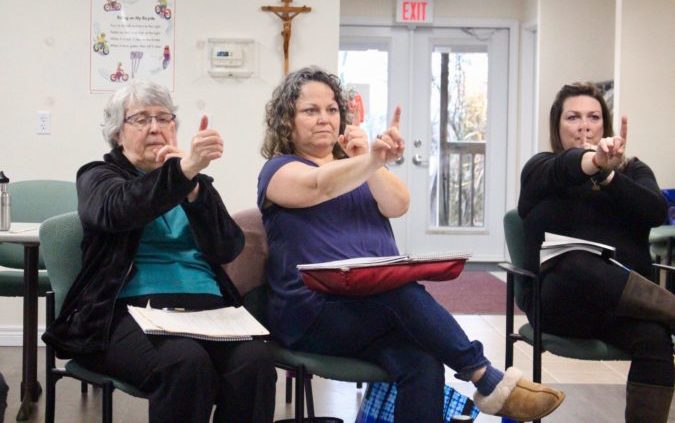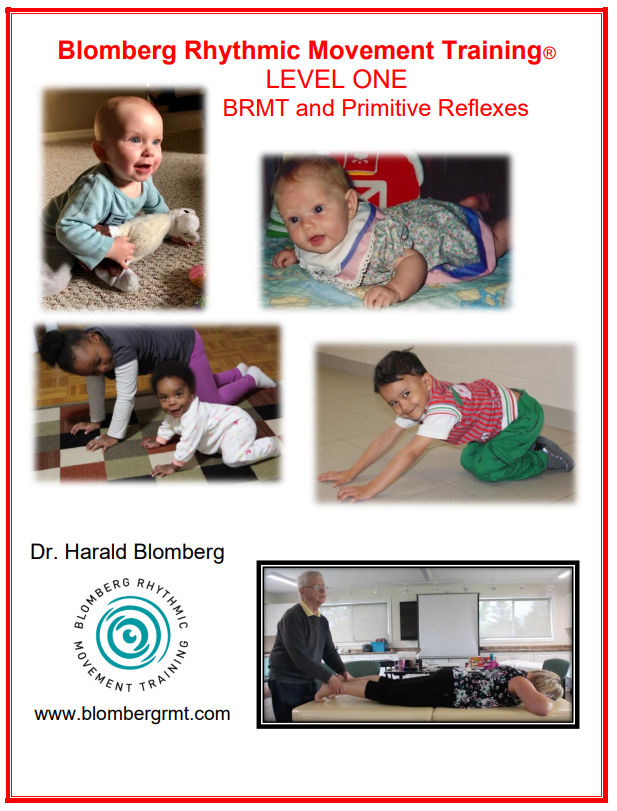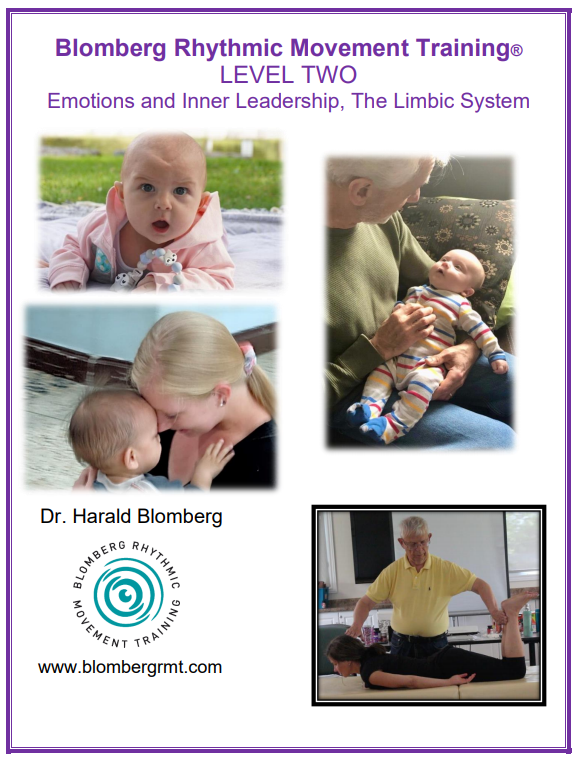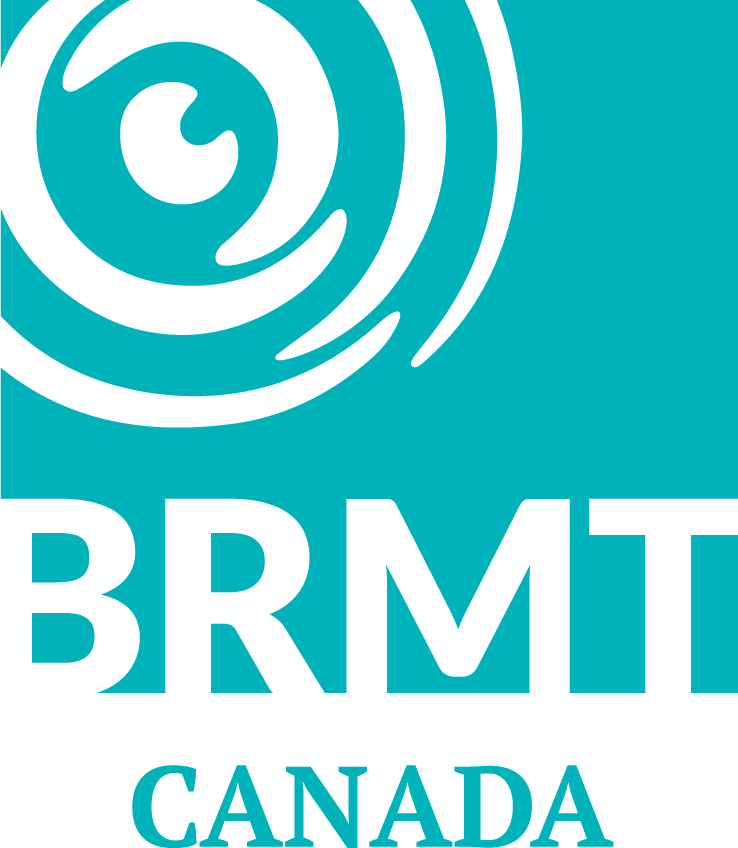Courses & Workshops
BRMT Canada courses and workshops are an excellent way to gain understanding of the importance of reflex integration for both children and adults.
Blomberg Rhythmic Movement Training Courses


BRMT Level One
Rhythmic movement training and primitive reflexes
In this course, participants will gain a thorough understanding of Blomberg Rhythmic Movement Training (BRMT). They will explore the fundamentals of BRMT and learn how rhythmic exercises can be employed to:
- Regulate muscle tone
- Stimulate the brain
- Enhance attention and impulse control
- Integrate primitive reflexes
- Support physical development
The course combines both theory and practical application. Participants will engage in passive and active movements designed to stimulate the brain stem and cerebellum. Reflexes that will be covered include:
- Tonic Labyrinthine Reflex (TLR)
- Landau Reflex
- Amphibian Reflex
- Babinski Reflex
- Spinal Galant Reflex
- Symmetrical Tonic Neck Reflex (STNR)
Additionally, participants will learn about the functions of the brain stem, cerebellum, and basal ganglia.
No previous experience required.
In Person classes: 16 and a half hours teaching time (CEU hours 16)
Online classes: 18 hours, 2 hours in breaks (CEU hours 16)

BRMT Level Two
Rhythmic movement training, emotions, and inner leadership, the limbic system
In this course, participants will explore the connections between reflexes and our emotions, as well as the challenges and fears that can lead to paralysis from fear. The course will highlight the limbic system’s role in emotional regulation and stress management, demonstrating how BRMT integrative exercises are particularly beneficial for individuals with Autism, ADHD, OCD, emotional outbursts, self-regulation challenges, sensory issues, and various other concerns.
Additionally, the course will examine reflexes that significantly influence our emotions, including the Fear Paralysis reflex, the Moro reflex, and the Tendon Guard reflex. This training is an essential resource for anyone interested in working with rhythmic movement techniques.
Prerequisite: BRMT Level One
In Person classes: 16 and a half hours teaching time (CEU hours 16)
Online classes: 18 hours, 2 hours in breaks (CEU hours 16)

BRMT Level Three
Rhythmic movement training and Reflexes in Dyslexia, and more
This course explores how various factors—such as vision, articulation, and motor skills—impact our reading and writing abilities. We will focus on assessing non-integrated primitive reflexes and identifying other motor disabilities crucial for understanding dyslexia and other learning challenges.
Additionally, we will discover methods to enhance reading and writing skills by addressing these issues through rhythmic exercises and reflex integration. The course emphasizes the importance of recognizing visual problems and improving vision and reading by integrating rhythmic and visual exercises.
Prerequisite: BRMT Level One
Highly recommended: BRMT Level Two

BRMT In-Depth Consolidation Course
This course is a review for those who have completed BRMT Level One, Two and Three.
Participants will:
- Re-examine each reflex
- Review testing the reflex through noticing and muscle checking
- Practice all exercises and movements to integrate the reflex
- Be able to identify blockages and retained reflexes
- Solidify all Isometric techniques
- Confirm any food intolerances and identify necessary nutrition and supplement support
- Assess causes of emotional reactions to rhythmic movement training and share techniques on how to handle responses
- Learn how to do case studies using BRMT techniques
- Be given a facilitator client checklist to use for case studies or private practice
- Be provided with suggestions for first client visits and follow up sessions
Prerequisite: BRMT Level One, Two, and Three.

Have questions about our courses?
To request information about courses, or to set up a training in your city, do not hesitate to write to us!
Primitive Reflexes
Postural Reflexes
- The Amphibian Reflex
- Crawling Reflex
- Neck and Head Righting Reflexes
Bridge or Transitional Reflexes
Special Courses in the Training Curriculum
BRMT for Early Childhood Education
Games and Activities to Assist Reflex Integration
In this engaging two-day course, we will delve into the essentials of rhythmic movements, adopting a teaching style akin to Level 1, but excluding isometrics. This course aims to equip us with the skills to implement rhythmic movements with young children in early education, specifically from preschool to grade 3.
Key Learning Objectives:
- Identify and assess primitive reflexes that impact motor, emotional, and cognitive development in preschool and elementary-aged children.
- Explore how rhythmic movements and games can be customized to promote the integration of the following reflexes:
- Moro
- Fear Paralysis
- Tonic Labyrinthine Reflex (TLR)
- Landau
- Spinal Galant
- Amphibian
- Babinski
- Hand Grasp
- Symmetrical Tonic Neck Reflex (STNR)
- Asymmetrical Tonic Neck Reflex (ATNR)
No previous experience required.

BRMT for Sustainable Health
Diet in autism and ADD/adhd
chronic inflammation & Detoxification
This two-day in-person course emphasizes the crucial role of diet and nutritional supplements when engaging with rhythmic movements, applicable not only for autism but also for ADHD, dyslexia, motor difficulties. As food intolerance becomes increasingly prevalent, it can significantly impact training effectiveness.
Course Highlights
- Testing for Food Intolerance: Learn how to identify food intolerances that may affect individuals.
- Identifying Nutritional Needs: Discover how to assess which food supplements might benefit each person.
- Primitive Reflexes: Explore the impact of primitive reflexes, particularly in autism and other movement and learning challenges
No previous experience required. Highly recommended: BRMT Level 1 and 2
In Person classes: 16 and a half hours teaching time
Online classes: 18 hours, 2 hours in breaks

BRMT for Pain Management in Adults
Part 1 and 2
These two courses focus on muscle tensions that strain the neck, spine, and joints, potentially leading to issues such as muscle inflammation, osteoarthritis in the joints and spine, a rotated pelvis, and skeletal deformities (e.g., scoliosis).
Part 1
Part 1 is designed for participants with no prior experience in rhythmic movement training. This course covers the fundamentals of Blomberg Rhythmic Movement Training (BRMT) and addresses muscle tensions arising from emotional and active stress reflexes, providing strategies for managing these issues.
Additionally, it introduces primitive reflexes that can lead to muscle tension, skeletal deformation, and osteoarthritis. Participants will learn how to test for and integrate several primitive reflexes. We will explore rhythmic exercises to correct postural hunches and reflex exercises aimed at addressing a rotated pelvis.
Prerequisite: None
In Person classes: 16 and a half hours teaching time (CEU hours 16)
Online classes: 18 hours, 2 hours in breaks (CEU hours 16)
Part 2
Part 2 is intended for participants who have completed Part 1 or BRMT Levels One and Two. In this course, we will focus on testing and integrating primitive reflexes that lead to muscle tension, pain, osteoarthritis, and deformities across various areas, including the jaws, neck, thoracic spine, lumbar spine, hips, legs, knees, feet, shoulders, and elbows.
Additionally, we will explore the integration of all reflexes that may contribute to a rotated pelvis, specifically addressing hip pain to help prevent osteoarthritis in the hips.
Prerequisite: Part 1 or BRMT Level One and Two
In Person classes: 16 and a half hours teaching time (CEU hours 16)
Online classes: 18 hours, 2 hours in breaks (CEU hours 16)

BRMT in Dreams and Inner Healing
This 2-day course will give the participants tools to work with the sometimes scary dreams that may be caused by rhythmic movement training. The symbols of such dreams are often similar to symbols of myths and folk tales and in the course Dr. Blomberg discusses the meaning of these symbols for healing and integration, and how we can use this information when working with our clients.
Participants are encouraged to do the movements for a period and keep a dream diary to bring to the course.
Previous knowledge required: BRMT Level One and Two
Attend a Blomberg Rhythmic Movement Training course or workshop!
Can’t find the class you are looking for in an area near you? Send us a request!
